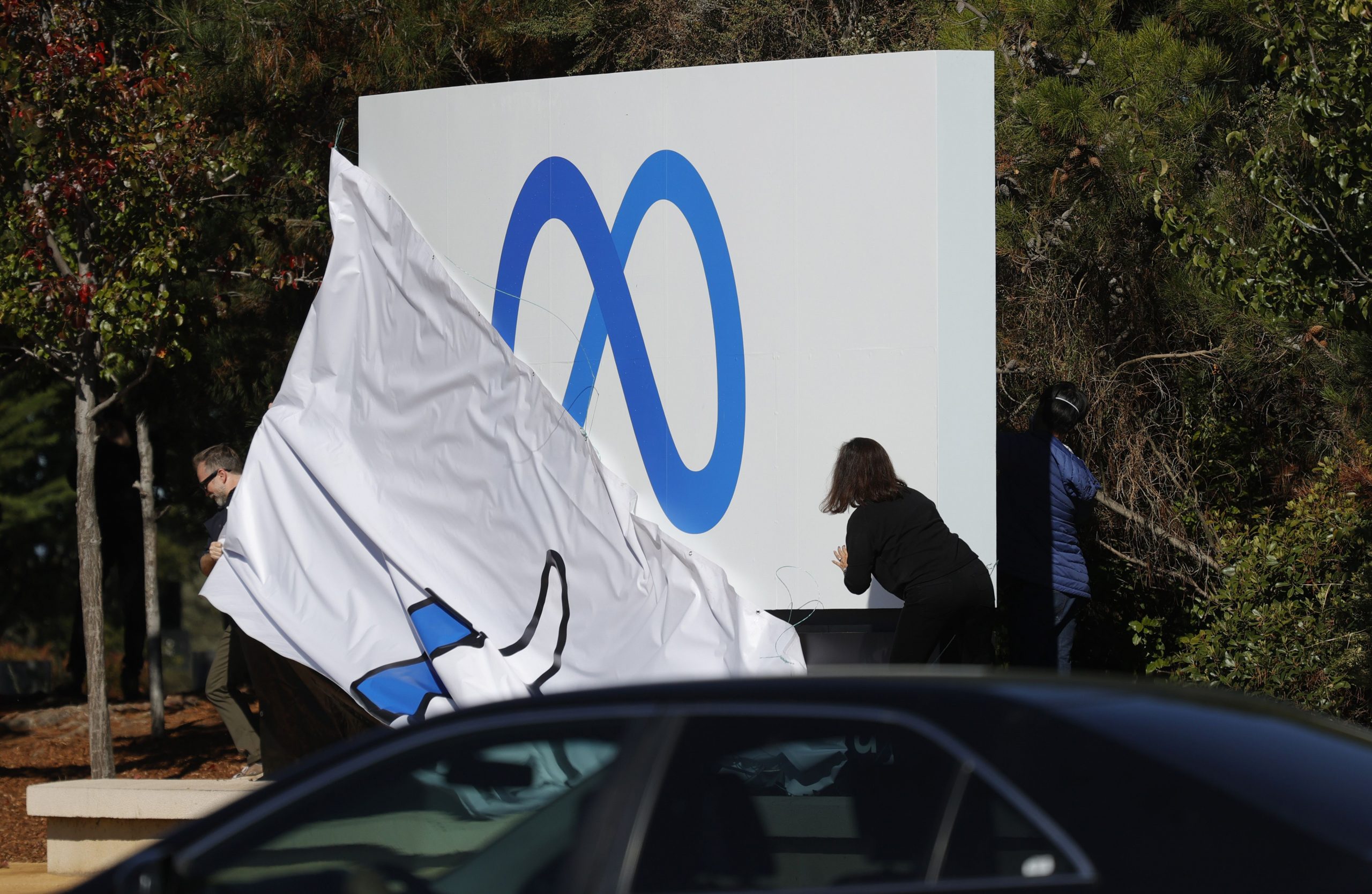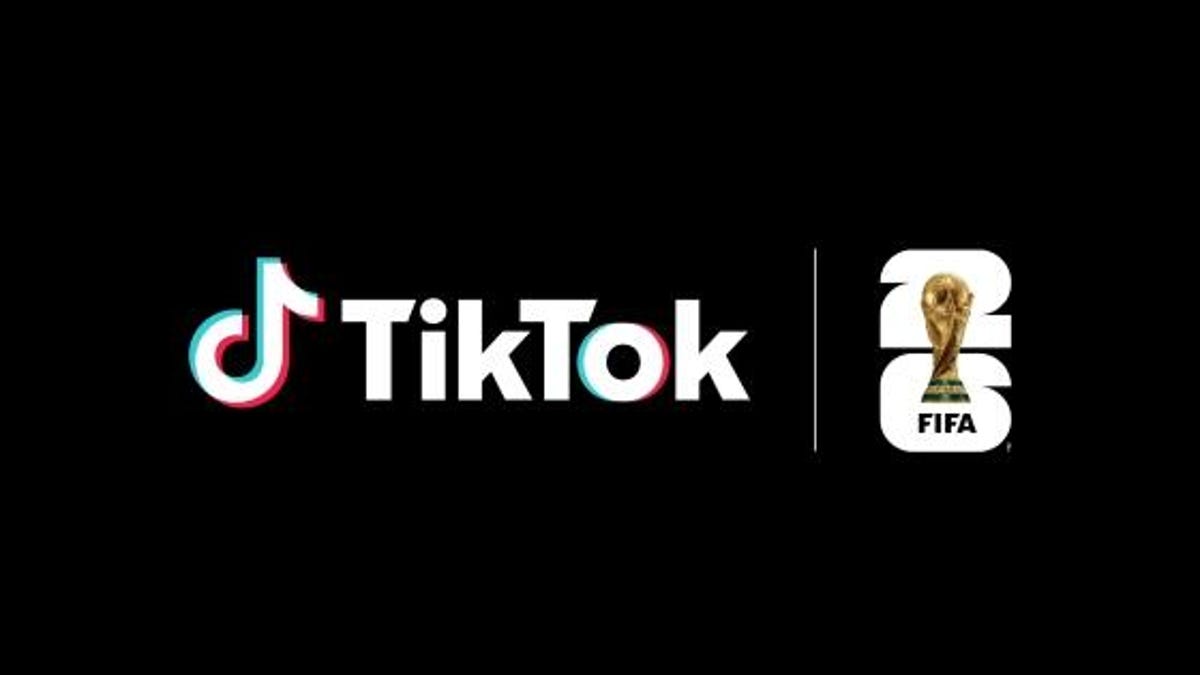Technologies
Facebook to Meta: A new name but the same old problems
Plagued by scandals, Facebook rebrands itself as Meta. The tech giant still must earn back our trust.

Facebook’s iconic thumbs-up sign at its Menlo Park, California, headquarters now bears a blue infinity-shaped symbol along with a new name: Meta.
The corporate rebranding, unveiled Thursday at Facebook’s Connect conference, is part of Facebook’s headlong sprint into the metaverse, a virtual environment where people could work, play, learn and socialize with one another. CEO Mark Zuckerberg called the metaverse, which at this point is largely hypothetical, «the successor to the mobile internet.»
In barreling headlong into the metaverse, however, Facebook may be repeating the practices that got it into trouble in the first place. The company’s former mantra — «Move fast and break things» — encouraged a culture that rewarded new ideas without careful consideration of the risks. The metaverse will create an entirely new environment for Facebook’s legacy problems to take root.
Facebook’s hard-charging attitude has contributed to it racking up a seemingly endless list of scandals around data privacy, hate speech and misinformation. It’s been blamed for destroying democracy and for body shaming. The company’s latest controversy, which involves leaked documents gathered by former Facebook product manager Frances Haugen, has proved especially damaging. Haugen alleges the company has misled the public and investors about its role in perpetuating hate speech, misinformation and other harmful content.
Facebook denies the accusations, noting that it has more than 40,000 people working on safety and security. About 3.58 billion people use Facebook and its services every month.
Analysts say a clever rebranding won’t help Facebook distance itself from its many problems.
«A name change doesn’t suddenly erase the systemic issues plaguing the company,» Forrester vice president and research director Mike Proulx said in a statement. «If Meta doesn’t address its issues beyond a defensive and superficial attitude, those same issues will occupy the metaverse.»
Forrester, which surveyed 745 people across the US, Canada and the UK, said 75% of those polled disagreed that a new company name will increase their trust in Facebook.
The company says the rebranding is a refocusing of its corporate priorities. Founded in 2004 in a Harvard dorm room, Facebook has spread beyond its roots as a social network. The tech giant now has virtual reality headsets, smart glasses and video chat devices. It’s also dabbling in finance with its Novi cryptocurrency wallet.
During the Connect keynote, Zuckerberg said he’s well aware of the risks that come with entering a new field. Facebook doesn’t have a great track record when it comes to protecting the privacy and safety of its users, and those issues won’t vanish in the metaverse.
«Every chapter brings new voices and new ideas but also new challenges, risks and disruption of established interests,» he said. «We’ll need to work together, from the beginning, to bring the best possible version of this future to life.»
A future utopia or dystopia?
Zuckerberg’s presentation painted a hopeful vision of the metaverse, filled with digital spaces for people to gather. Friends could fence using virtual swords, attend concerts from their homes or simply work together in virtual offices.
But Facebook will also have to deal with the same issues it grapples with on social media, including data privacy, security, child-exploitation dangers, and content moderation. Misinformation has been a widespread problem on Facebook’s namesake social network. Lies that spread on the platform have been blamed for the Jan. 6 insurrection and for hesitancy to get COVID vaccinations.
That wasn’t lost on lawmakers, who’ve been studying ways to regulate the company and its Big Tech peers.
«Meta as in ‘we are a cancer to democracy metastasizing into a global surveillance and propaganda machine for boosting authoritarian regimes and destroying civil society… for profit!'» tweeted Rep. Alexandria Ocasio-Cortez, a Democrat from New York.
Sens. Richard Blumenthal, a Connecticut Democrat, and Marsha Blackburn, a Tennessee Republican, also warned Zuckerberg a name change wouldn’t deter lawmakers from pursuing Facebook. The two senators lead a subcommittee that recently met with Haugen to discuss her concerns about the social network.
Virtual worlds existed long before Facebook ramped up investment in VR and augmented reality after its purchase of headset maker Oculus in 2014. And the world of virtual reality already has a harassment problem. In 2007, Belgian police were looking into whether an avatar allegedly raped another character in Second Life, a virtual world developed by Linden Lab, according to The Washington Post.
Andrew «Boz» Bosworth, who’ll become the company’s new chief technology officer in 2022, said in a video chat before the conference that muting another user could help give people more control over their surroundings in VR if they’re being harassed. Facebook is also exploring ideas such as allowing users to share with authorities the last 10 to 15 seconds of a VR interaction they’ve had with another person. The company, though, will have to weigh the trade-offs between privacy and user safety, a dilemma it’s confronted before with end-to-end encrypted chats on messaging apps.
Another issue that may pop up is the use of avatars to impersonate others. One solution could be tying the avatar to an authenticated account or verifying identity in some other way.
A new name, however, won’t help Facebook dodge its old problems. Lawmakers, celebrities and critics took swings at the company after its big reveal.
«Changing their name doesn’t change reality: Facebook is destroying our democracy and is the world’s leading peddler of disinformation and hate,» said the Real Facebook Oversight Board, a group of well-known critics. «Their meaningless name change should not distract from the investigation, regulation and real, independent oversight needed to hold Facebook accountable.»
Technologies
I Got Up Close and Personal With Boston Dynamics’ New Atlas Robot
Before Atlas takes its first steps into the world of work later this year, I found myself face-to-face with CES 2026’s most talked-about robot on the show floor.

When I say that I went hands-on with the new Boston Dynamics Atlas robot, I mean that I actually held hands with it. This humanoid robot, which CNET just awarded the Best Robot of CES Award, is one of the most advanced in the world, and I couldn’t pass up the opportunity to get up close and personal with it.
This product version of the robot, which is set to be shipped to Hyundai factories imminently to start working, has been the talk of CES this year. The specific Atlas robot I encountered was a static model that wasn’t turned on or fully operational. Our interactions were, therefore, sadly one-sided. Still, I ran my hands over its soft-touch plastic shell and gently prodded at its finger joints, wondering how it would feel if they gripped me back.
People tend to have varying feelings about humanoid robots — understandable given that they are built to some degree in our image, while also usually being stronger than us, with «brains» that we don’t fully understand. Atlas definitely evokes contradictory emotions for me — even more so when I stood face-to-face with it.
I’m in awe of the engineering, a little fearful of its capabilities, hesitant about what it could mean for the future of humanity and charmed by its design and styling. The periwinkle blue iteration of Atlas that I met on the show floor at CES 2026 almost bears more resemblance to a Dyson product than it does the industrial robots that defined Boston Dynamics’ early days, when it was best known for its work with DARPA.
«There’s a lot of really specific things about this robot that probably look a little weird,» said Zachary Jackowski, Boston Dynamics VP and general manager of Atlas. He pointed to the legs, which he described as «like nothing anyone else was doing.»
Atlas’ thighs are narrow set and in line with the torso, while the calves are wider set, attached to their upper counterparts with a circular joint. This robot is, in fact, all subtle curves and soft lines. There are no harsh edges or stark angles.
During a year when CES has been flooded with humanoid robots, Atlas definitely does stand out due to its design. It appears both less classically human and less industrial than some of its peers, while also lacking the often intimidating, featureless faces they tend to exhibit. Instead, it has two low-set cameras resembling eyes placed where you’d usually expect a mouth to be. Its face is a perfect flat circle, defined by an LED halo that gives it a somewhat Pixar lamp effect.
I asked Jackowski why Boston Dynamics decided to skew so relatively unhuman with this version of its humanoid. «Well, it’s not a human,» he said. «It projects the wrong first impression about a robot to have it pretend to be something that it’s not.»
Particularly in the early days of humanoids, he added, robots won’t have anything like human-like intelligence. People should look at it and see it for what it is — a tool for performing tasks safely and efficiently.
In fact, most of the design decisions were made to keep Atlas as simple, scalable and safe as possible, Jackowski said. I remark that there’s some irony in thinking of a humanoid robot as simple, given the complexity of the technology and development process to bring Atlas to life.
The key to making it simple, Jackowski said, is having a strong enough grasp of the technology to «accomplish the complex thing of building a humanoid robot,» but then being able to take it apart and understand that you can use fewer computers and actuators in it while achieving the same results.
And it’s essential to Boston Dynamics that Atlas is perceived as simple. After all, it’s a general-purpose humanoid, which might eventually be sent far and wide to fulfil all manner of roles. Jackowski calls it the «ultimate generalist.»
Simplicity aside, there are aspects of Atlas that Jackowski believes set it apart from other humanoids at the show. «The repairability of this robot is crazy good,» he said. «The runtime is crazy good. The strength is unlike anything.»
From working in Hyundai’s manufacturing plants, Atlas’s job trajectory is to eventually graduate to many of the same industrial environments where Boston Dynamics’ Spot robot works, before moving to bussing tables in the service industry and eventually into the home. The robot will evolve between now and then, Jackowski said. However, this could be an early glimpse of the type of humanoid that will eventually be our housemate.
That’s some way away, though, which is probably for the best. As I gaze up at Atlas, which I’d guess is around the same height as my husband, my feeling is that, however impressive Atlas is, I’m still not ready for it to move in.
Technologies
This Star Wars Dartboard Has a Secret That Will Stop You From Using the Force to Win
This cool dartboard has cameras to track your score and keep you honest

Right in the middle of the high-tech show floor at CES 2026 sits a pub called the Bull and Barrel with some of the coolest dartboards I’ve seen. Target Darts was showcasing its collaboration with both Star Wars and Xbox. Darts may not be for everyone, but I love «shooting some arrows» in my basement with the family. I also love anything Star Wars themed, so these tick a lot of boxes.
The basic Star Wars set comes with a branded board and wall protector that resembles the cockpit of the Millennium Falcon and costs $200. The board is of very high quality, with a tight-knit sisal fiber face, and the protector is thick enough to keep stray shots out of your drywall. The graphics are cool too, with nods to the original Falcon and even have the gold dice hanging above.
The big tech twist to this board, though, is the Omni light ring around the outside. It uses four cameras to track your dart’s position, then sends that info to an app that keeps score. The scoreboard is crisp and clear and uses the voice of legendary darts announcer John McDonald to narrate your game. It’s pretty great to hear his voice announce my terrible scores.
The Omni also allows you to connect with other players worldwide via shared scoreboards. I love the idea of my dad having a board at his house or playing a match with me at my house. It adds a feeling of community to home darts that you don’t normally get outside a pub or bar.
The Omni is a much more expensive proposition than the Star Wars set, coming in at $650, but if you’re serious about the game and a Star Wars fan, it looks to be a great investment.
Technologies
TikTok and FIFA Team Up for World Cup 2026 Coverage
A new team-up aims to make this summer’s tournament more accessible for fans.

If you hadn’t already planned on swiping on TikTok videos of the 2026 FIFA World Cup, a new partnership between the social media platform and tournament organizer FIFA could motivate you to start stretching out your thumbs.
As the soccer tournament nears — it will take place from June 11 to July 19 and span 16 host cities in Canada, Mexico and the US — TikTok will become FIFA’s first «preferred platform.» According to a FIFA statement on Thursday, this entails TikTok providing more coverage of the World Cup, including original content and even livestreaming of some portions of matches.
Don’t miss any of our unbiased tech content and lab-based reviews. Add CNET as a preferred Google source.
You can use the FIFA World Cup 2026 hub on TikTok to find content, match tickets and viewing information, as well as participation incentives such as custom stickers and filters.
In the US, World Cup games will air live across Fox and FS1. If you don’t have cable, you can get a live TV streaming service, such as YouTube TV, which includes those channels. Additionally, every match will stream live on Fox One and the Fox Sports app.
«FIFA’s goal is to share the exhilaration of the FIFA World Cup 2026 with as many fans as possible,» FIFA Secretary General Mattias Grafström said.
-

 Technologies3 года ago
Technologies3 года agoTech Companies Need to Be Held Accountable for Security, Experts Say
-

 Technologies3 года ago
Technologies3 года agoBest Handheld Game Console in 2023
-

 Technologies3 года ago
Technologies3 года agoTighten Up Your VR Game With the Best Head Straps for Quest 2
-

 Technologies4 года ago
Technologies4 года agoBlack Friday 2021: The best deals on TVs, headphones, kitchenware, and more
-

 Technologies4 года ago
Technologies4 года agoGoogle to require vaccinations as Silicon Valley rethinks return-to-office policies
-

 Technologies4 года ago
Technologies4 года agoVerum, Wickr and Threema: next generation secured messengers
-

 Technologies4 года ago
Technologies4 года agoOlivia Harlan Dekker for Verum Messenger
-

 Technologies4 года ago
Technologies4 года agoiPhone 13 event: How to watch Apple’s big announcement tomorrow
